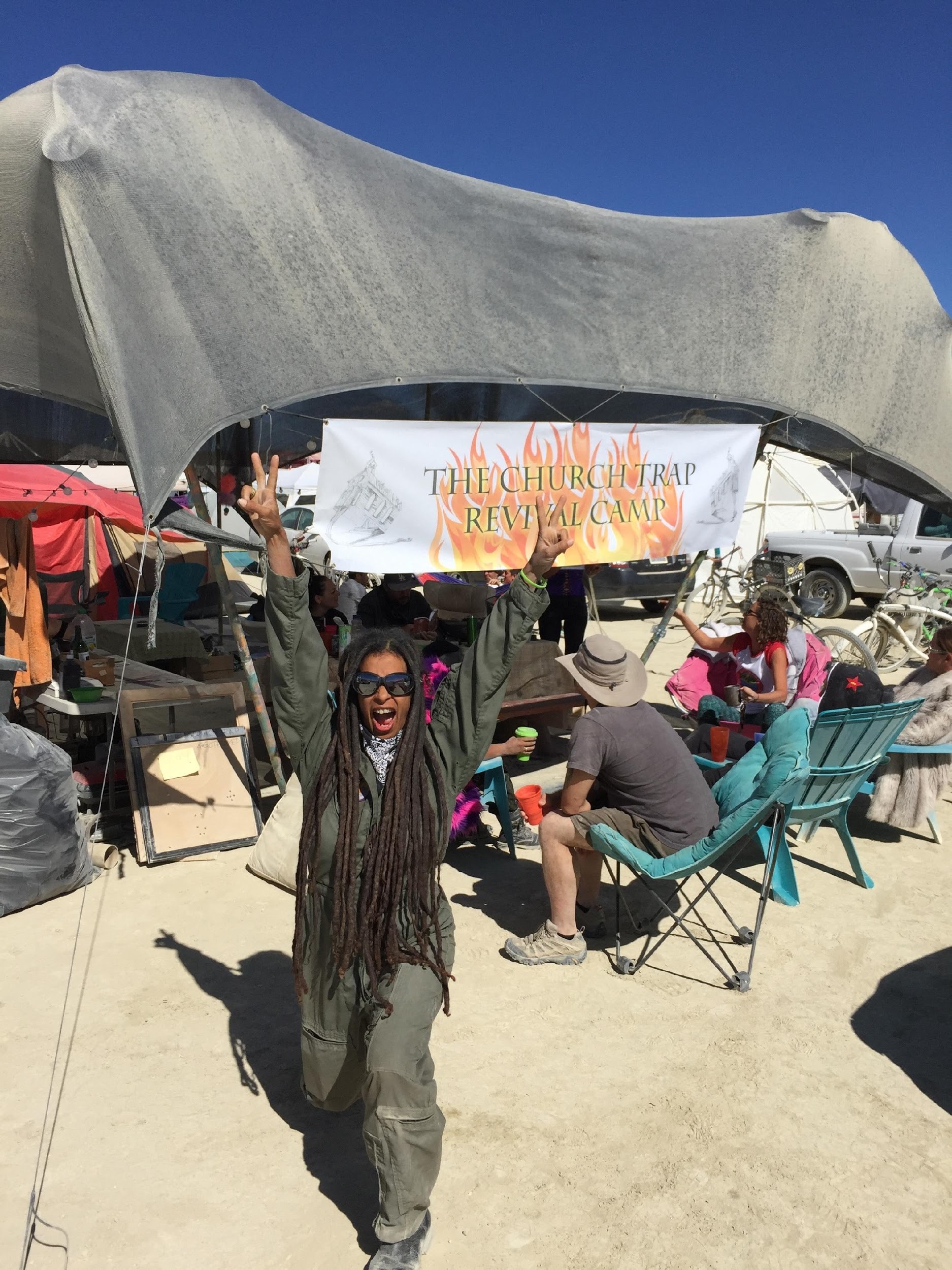
By Vernon L. “Uncle Vern” Andrews
At the turn of the last century, W.E.B. Du Bois wrote that the problem of the 20th century would be the problem of the color line. Du Bois was concerned with racial equality, institutional inclusion and increasing the social and economic power of non-whites in American society (Du Bois, 1904). Since this declaration, researchers have been fascinated by the enduring problem and social puzzle of racial harmony in America, power-sharing and economic equality.
The relationship between black and white Americans continues to be a pressing concern. These two groups have had strained relations since, well, the birth of our nation. Many of us thought these issues would subside with the election of Barack Obama and that the country would head in a new fruitful direction toward inclusion — that black lives would truly, equally, matter.
While this hasn’t happened quite yet, many of us seek to be inclusive in our institutions — and Burning Man is no different. In our continuing Census review of inclusion and diversity on the playa, we will now address what a few of us academic and non-academic “Burning Nerds” have discovered about African American Burners in the Nevada desert.
Burning Man can be a catalyst for a positive change about the social “other”, both in our desert culture and in social relations outside Black Rock City.
“Whaaaaaaat?” Really.
Extraordinary conversations around playa desert art can stimulate social change. I believe Du Bois would be a Burner if he were alive today, and would point to Black Rock City as a compassionate community worthy of study.
Getting Along is a Challenge
One of the reasons I returned to live in the U.S. in 2009 (and went straight to D.C. to the presidential inauguration) was to be a part of the renaissance of black culture and cross-cultural relations. With the rise in racial tensions around videotaped police actions in urban settings in the U.S., many think race relations and social good-will have taken a backwards step — and not simply in a black/white front.
Star women’s NBA athlete Skylar Diggins (@SkyDigg4) tweeted in early March 2016: “Disturbing footage of an African American teenage girl literally getting SHOVED out of a Trump rally. Our country is going backwards!” Many agree with Skylar about African Americans and also Mexican Americans, the LGBTI community, and Muslims, too. We are in the midst of turmoil. While intergroup conflict has always been a part of the fabric of U.S. culture, people have rarely felt so free (since the Civil Rights Movement) to speak out against traditionally disadvantaged groups.
Amanda Taub speaks to the rise in society of the “other”:
“The social threat theory helps explain why authoritarians seem so prone to reject not just one specific kind of outsider or social change, such as Muslims or same-sex couples or Hispanic migrants, but rather to reject all of them.” (Taub, 2016)
We believe Burning Man culture offers opportunity for contact between groups. This, in turn, can forge better group relations. Burning Man is no silver bullet that will change race relations in the U.S. on its own. We need to be very clear about this. Black Rock City is comprised of many people, though, and people ultimately are the positive contagion that can spark change — or light the fire (see what I did there?).
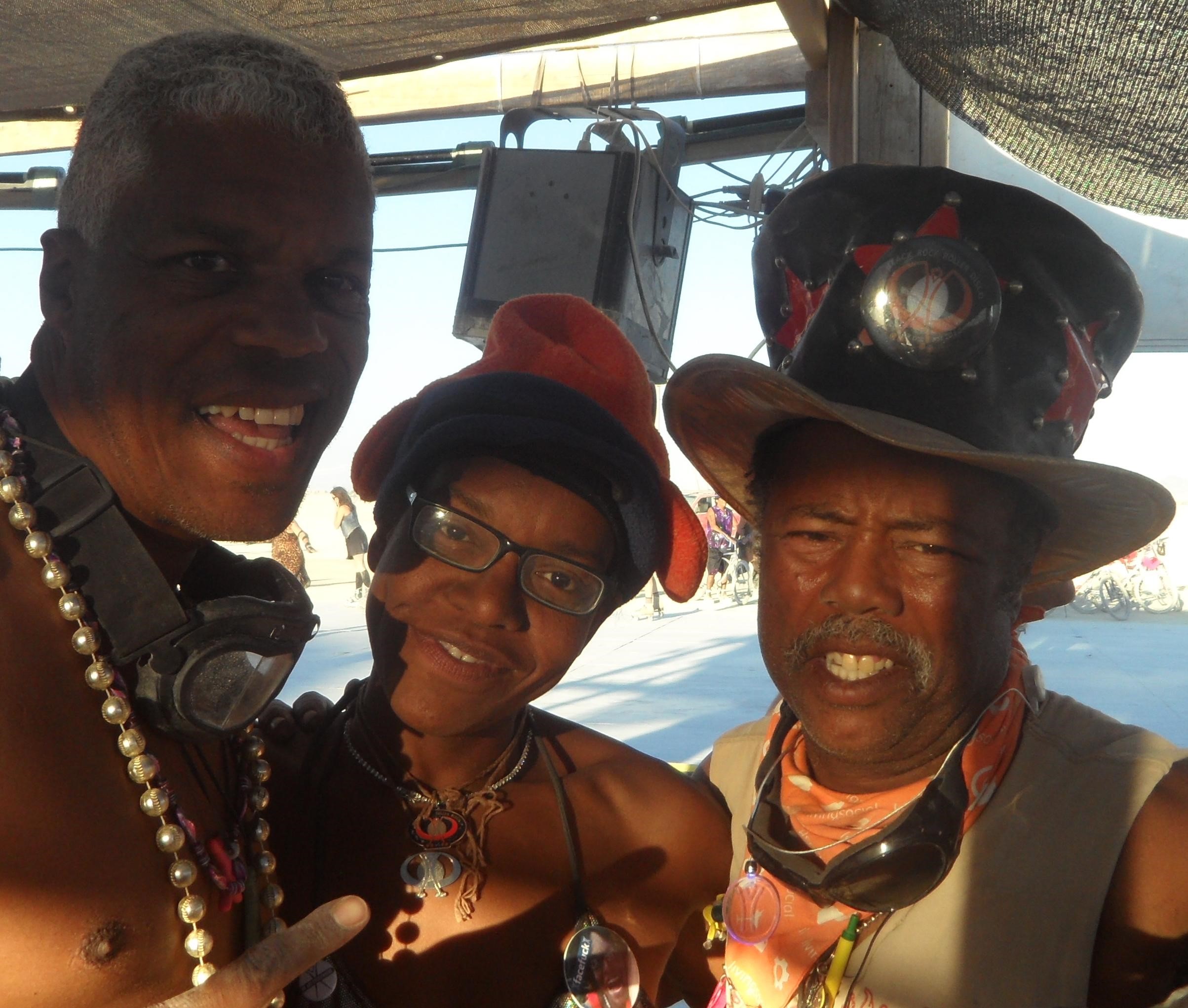
The disease of racism can be fought with the antidote of positive social contact, and certainly the playa is full of fun, non-threatening contact between all ages, genders, sexualities, nationalities, religions and political attitudes.
Social contact yields positive intergroup results when contact takes place in non-threatening environments with no pressure to “make nice” and no competition between groups. The playa can be a landscape for sheer human enjoyment — while at the same time providing an intergroup environment that can shift emotions.
Simple Human Contact and Play?
Will that Change Race Relations in the U.S.?
Contact research attempts to understand the intergroup situations that facilitate positive social change by outlining specific ways prejudiced individuals can learn to overcome stereotypes and negative attitudes about out-groups. The contact theory is grounded in the notion that increased contact with out-groups — be they ethnic, religious, sexual, gender, or ability-related groups — can reduce prejudice and hostility toward those groups. Allport (1954) refined this simple notion into his contact hypothesis by stating that certain social conditions needed to be met in order to fully maximize the potential contact for the reduction of prejudices. (Andrews and Brower, 2008)
Anyone who has attended Burning Man will tell you that beyond the fabulous art, Mutant Vehicles, informative talks and radical clothing on display, people share space with each other, random conversations evolve, and play happens. Do not underestimate the value of play. For many people in attendance, the opportunity to play and engage with people very different from themselves can often lead to an enhanced view of that “other” group.
The “Contact Hypothesis” (Allport, 1954), is steeped in a rich history of discovery and exploration of the social scenarios that produce camaraderie when groups are exposed to each other. This line of research, first observed United States military barracks in the 1940s and 1950s, led to further refining and strengthening of the situations that can lead to better vs. worse relations after interactions.
There is certainly across-group interaction at Black Rock City. People of all levels of queerness comingle and play; Japanese and Korean people share a cocktail and toast; black and white people skate in the roller disco; and Jews and Muslims ride bicycles side-by-side in dust storms. Many positive experiences result.
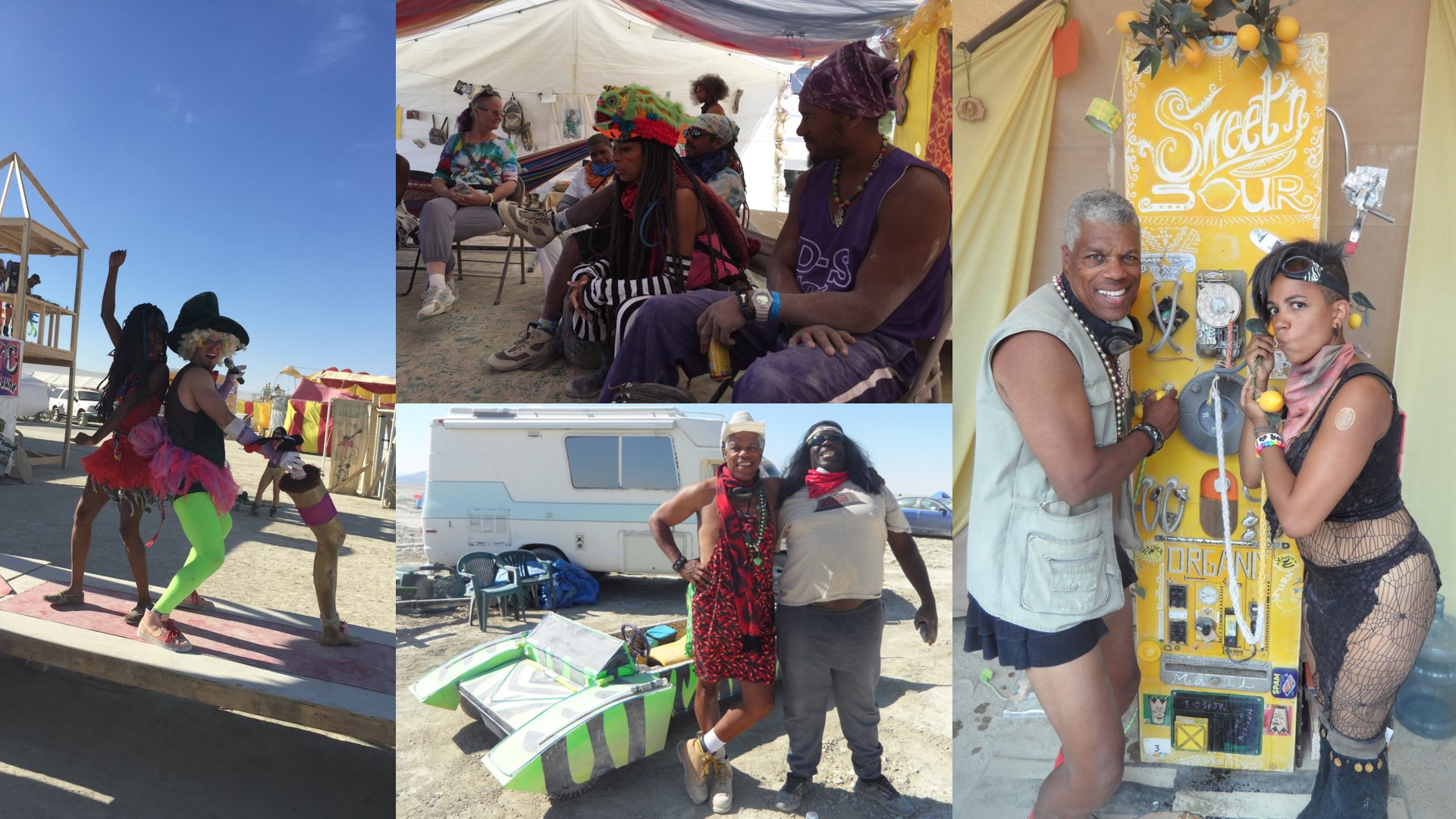
On Healing in the Dust
Obviously, people are having fun playing on the playa — all different kinds of people. On occasion there are bad experiences for some, which can open old wounds, but on the whole, most blacks have good experiences. The predominance of micro-compassion acts wins out over less common micro-aggression acts.
Que Viva! Camp, which was located next door to People of Color Camp (I am a member of both camps), relishes in highlighting the divide between people and closing this gap — especially among Native Americans, the Latino community, the African American community and whites. Their camp has virtually every color in the ethnic rainbow — including whites — and sponsors young artists of color, art installations, and promotes talks on diversity.
It was during a talk by me and Nick Powers of People of Color Camp (POC) that a man related a story that highlighted the hope we have for the Burning Man community’s reach to the rest of the world.
The Manhattan Project
During the discussion section of our joint talk, a man to my left who identified himself as a Native American “medicine man” said he had a story of healing on the playa he was especially emotional about. He shared.
I know an African American man in New York. He was healed on the playa. This man (let’s call him George) had expressed severe issues with white people. He said he could not stand their presence. He often refused to communicate with them. He had little to no trust of anyone white. He didn’t exactly ask for help, but I volunteered my advice: “I’ve got no medicine for that.”
I did suggest he come to Burning Man. It took some convincing, but he finally agreed.
I gave George all the instructions about weather, clothing, water, and the like needed to prepare for the harsh environment. We got his ticket sorted. He was then off for his adventure in racial co-mingling.
Except, he didn’t follow my instructions. He got to the gate and had forgotten his ticket. He didn’t bring water. He didn’t bring food. He didn’t even bring appropriate clothing for the cold nights. Since he could not get in, he walked to a space between makeshift buildings and sat, huddled, and eventually shivered until some greeters found him.
Well, they managed to find him a gift ticket, got him to their camp, fed him, gave him appropriate clothing, supplied him with water and supported him with food.
To cut to it, by the end of his stay here he was hugging people, smiling, and feeling wonderful. And it continued — the love. He got home and hugged people he knew but didn’t trust. It was like his heart was open and filled with gratitude. He was now available to an entire subset of humanity he previously didn’t trust at all. That is powerful. That is the power of this place.
At that moment those in the group at Que Viva! Camp exhaled, some cried, others told their stories of joy and humanity. I left feeling we had crossed a huge barrier and could use this information as anecdotal, or, for me, confirmation that the theory of contact can lead to good. Not always. However, as noted above, the lack of contact can hold us firm in place — never quite knowing what we might be missing out on. This is but one of hundreds of thousands of interactions that have happened over the years at Burning Man. Micro-compassion everywhere.
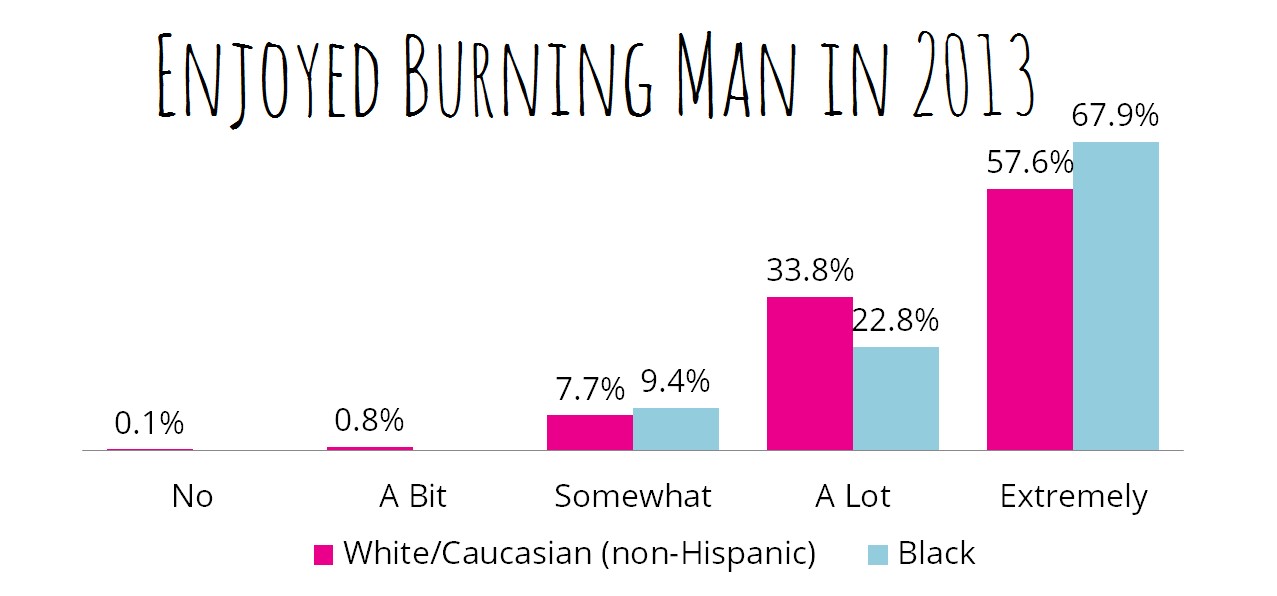
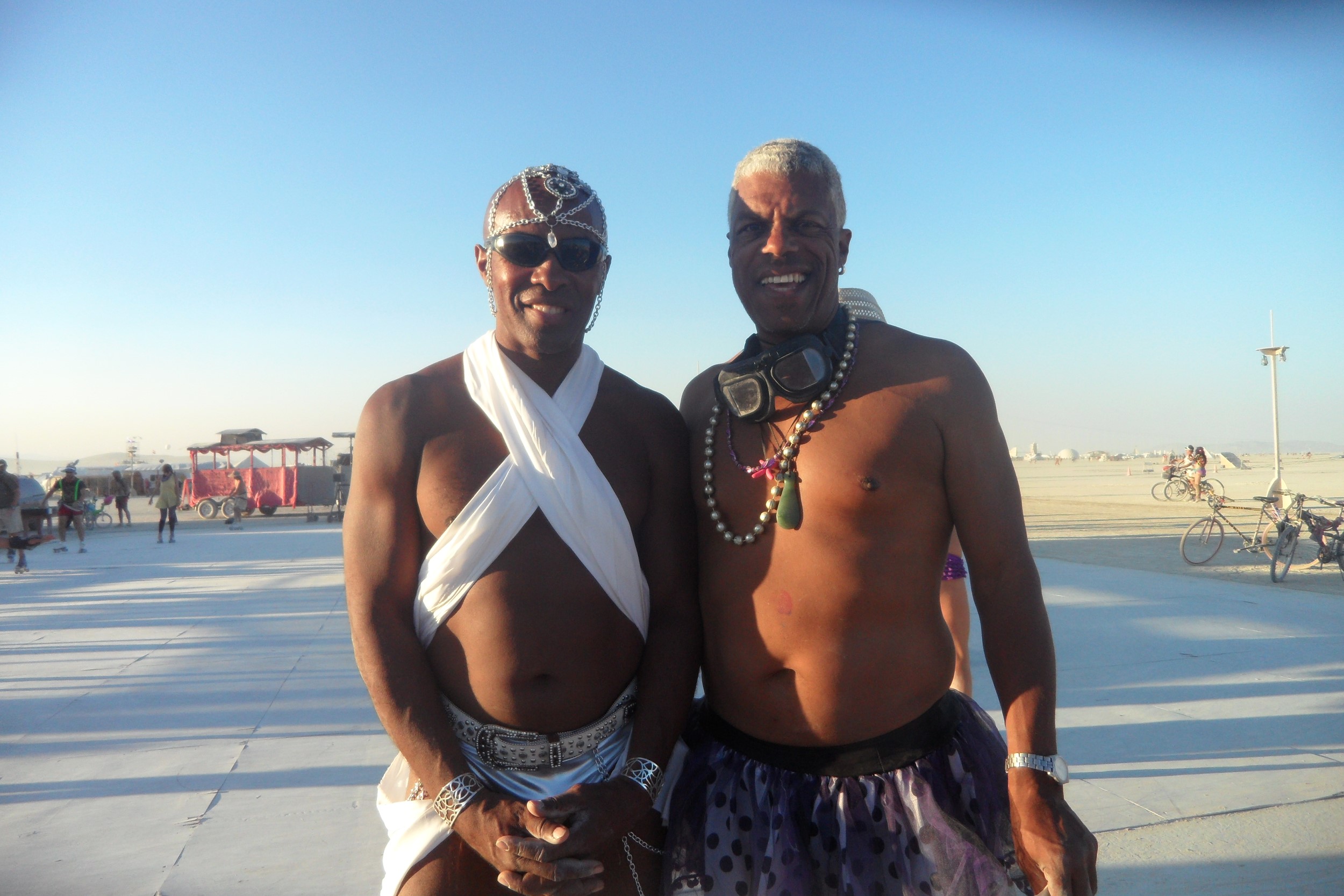
“Stereotype Avenue” Is a Two-Way Street
This will come as no surprise: In addition to white prejudice, some African Americans also hold very strong negative views toward whites, and often for good historical reason.
African Americans, especially males, can hold encrusted negative views of whites in power positions — their boss, police, teachers, and many other authority figures. Many choose to keep their distance from whites, even in social settings. But to be fair, I will make a necessary (but obvious) statement: Most African Americans have little problem with white people.
For those that do still hold whites accountable for past wrongs and contemporary social and institutional problems, there are few opportunities to meet others in equal status situations to relax, talk, or play. Instead, when confronted, many African Americans put on a cool demeanor and self-monitor behavior so as not either ruffle feathers or pose a threat (Majors and Billson, 1992; Andrews and Majors, 2004). As the saying goes, many blacks “go along to get along.”
To be equally fair, not all whites are prejudiced against black people. Not by a long shot. As we have moved through the 20th century and into the 21st, evidence all around us suggests whites are becoming far more tolerant of not only black people but also other socially (traditionally) disadvantaged groups. Problem is, many people in those out-groups still view whites as the powerful “other” and a threat. We need more close contact, questions, discussions, and on occasion, a cocktail or dinner to simply ”be” with each other with no agenda but playful interaction.
Playa play happens everywhere: at the Temple, around the Man, at Barbie Death Camp, dancing at Distrikt, enjoying a cocktail at the Drink Naked bar, or simply biking around deep playa. Black Rock City has a great non-threatening and playful environment.
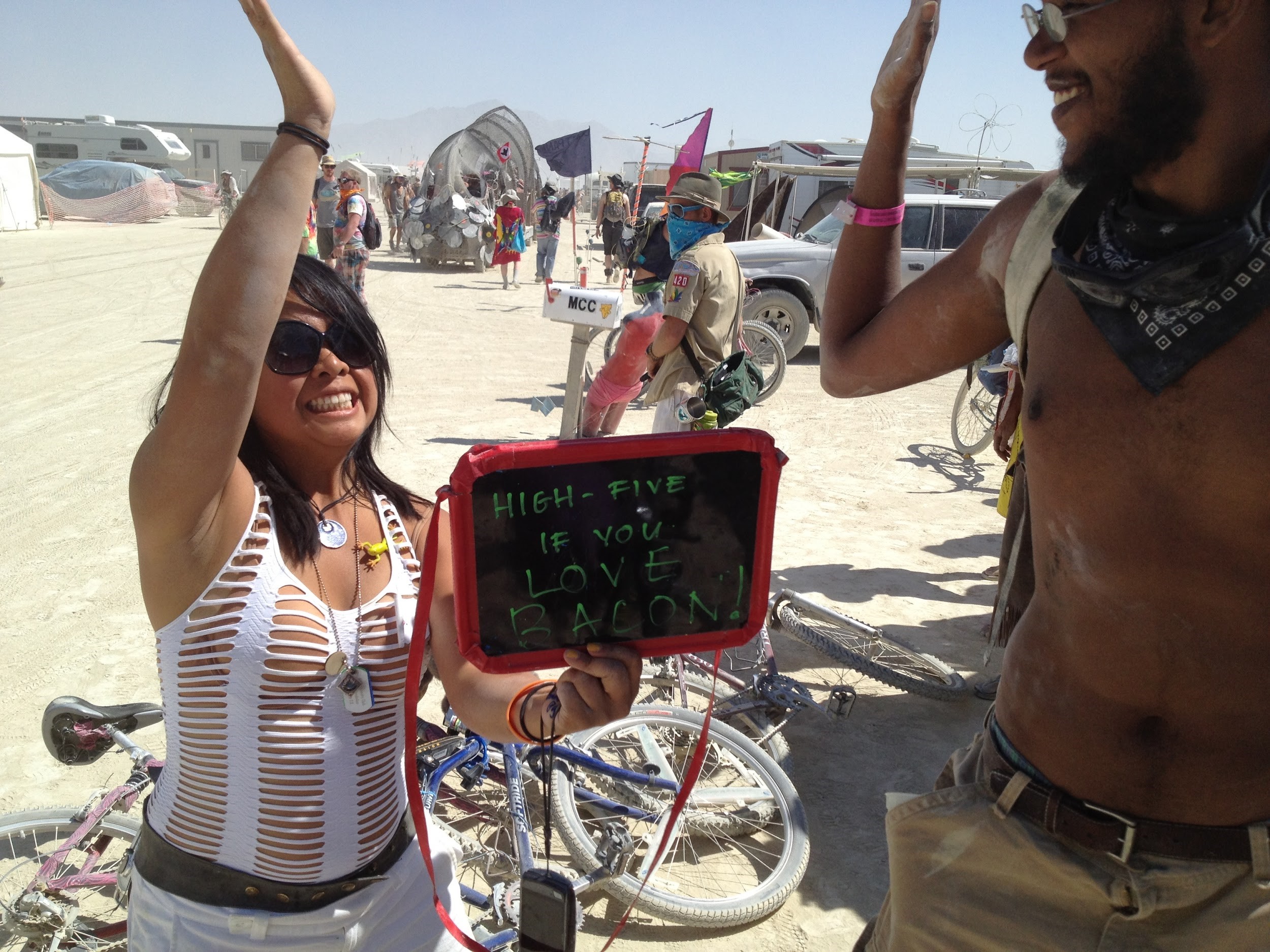
Put this Data in your Pipe
The total population of African Americans on the playa is relatively small when compared to whites. Some of us at the Census have been concerned that the proportion of African Americans in attendance is slipping. As the population of Black Rock City has grown, we would hope that there would be a proportionate growth in the numbers of African Americans attending. But that is not the case. The numbers seem to have dropped, and that has us concerned.
We don’t know the reasons why. It might be that African Americans find it too hard to get a ticket in recent years (like everybody else) and are less willing to go the extra mile to source a ticket. It may be simply that fewer African Americans want to attend or that blacks feel less inclined to Burn with social issues on the uptick. The jury is still out on the small (but no less concerning) slippage in African American attendance.
Below are other relevant (okay, nerdy) Census stats on attendance from 2012 to 2015. These graphs break down the proportion of people in Black Rock City who identified as Hispanic, black, Native American, Asian and also those who selected more than one race/ethnic group on the post-event online survey. These numbers were weighted to make them representative of the Black Rock City population using data collected in a random sample at the gate each year. See our previous post for more information about our methodology.
Hispanic and Asian participation are trending upward. African American and Native American participation is trending downwards. Future work would do well to elaborate on the experiences of Asian, Latino and Native groups, also — both positive and negative. Organic playful contact can be beneficial with other groups as well. Mixed-race folks, we believe, will trend upward as intermarriage increases and people who might otherwise feel “othered” in society find a home on the playa amongst many, many others with diverse parentage (as noted by Bianca Ruffin in a previous post).
Census Lab Field Notes Project
The Census team not only conducts surveys that yield quantitative data on the entire population. We also ask participants lounging in the Center Camp Café and at the Census Lab to participate in our research by sharing their perspectives in our field notes project. On these blank pages we solicit answers to open-ended questions.
We devised these questions and share participants’ responses because we are grappling with questions like: Is there something about the playa experience of ‘people of color’ that is upsetting? Are there impediments to attendance we are not aware of? Are there unconscious actions by the Burning Man organization that impede attendance? In what ways can Black Rock City be more welcoming to groups traditionally marginalized in society? Though we may not have the answers yet, it is important to ask the questions.
The majority of respondents answering this question did lament that there were not more people of color at Burning Man. The consensus had 105 total responses with a “yes” to indicate lament that there are not more people of color at Burning Man and 69 responses with a “no” to indicate no lament about this. Many chose not to respond with a simple yes or no answer, instead writing out lengthy sentences that described why they believed people of color should be more involved or why they did not feel one way or another about the subject.
Many respondents also expressed the sentiment that people are all the same objecting to any separation of people into groups according to skin color, questioning the relevance of such groupings, and expressing love for everyone. Many people also raised questions as to why there was a lack of non-white people but said they did not necessarily lament it.
Of the people who answered variations of “no”, some went on to explain that they did not lament it because those who needed to go to Burning Man would eventually find their way there.
In the field notes book we also asked the question “What is it like for you interacting with people of color at Burning Man?” Here are some participants’ answers to this question, which we asked in 2013 and 2014 (310 respondents total).
“Reminds me the world doesn’t always look like me.”
-male, age 48, Portland, OR“Natural. My first thought when seeing a person of color is still to think of their race in my mind. However I try to love everyone and when I have to choose I try to do it on character only.”
-male, age 27, San Francisco, CA“Positive, refreshing…. not enough”
-male, age 29, Chicago, IL“Beyond Beautiful”
-male, age 27, Portland, OR
We also asked the question, “What is it like for you interacting with people who are white at Burning Man?” and 37 people responded with some variation on the sentence, “Same as interacting with anyone else.” Here are some other interesting responses:
“Great but a [little] boring — I’m not into monocultures and it reminds me that sadly that not all people have access to Burning Man. Of course there will be people of color who may not be attracted to Burning Man as it is seen as a white thing but Burning Man should probably do more to attract people of color so they feel at home here.”
-female, age 48, Melbourne, Australia“We are all alike, we come here to learn more about ourselves. I came here to heal and meet incredible friends. Coming to Burning Man recharged my soul. And wish to spread … that love everywhere.”
-male, age 27, Brooklyn, NY
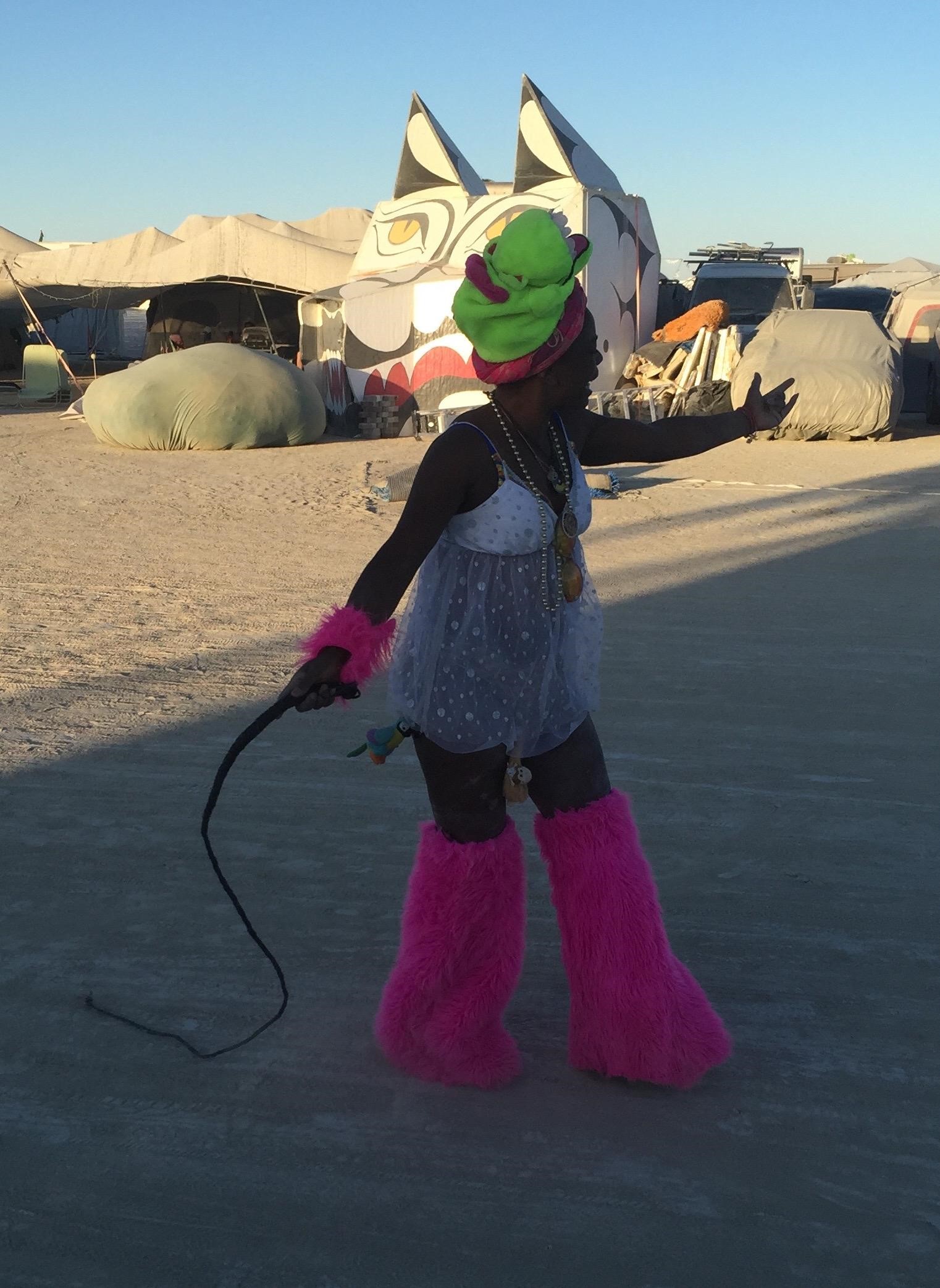
An Online Survey of Black Burners
I surveyed African Americans on playa about their experiences in a separate study from the Census Data shown above. I collected email addresses over a three year period (2012, 2013, and 2014) and surveyed 133 African Americans and nine “others” about their experiences. The idea was to find out if there were negative or positive experiences people wanted to discuss in relation to their blackness.
Demographic breakdown of the respondents:
- 142 people surveyed
- 46 responses
- 80% heterosexual, 20% LGBT
- 34% working class, 34% middle class, 17% upper class, 12% poor, 10% student
- 94% black (African American, Afro-Caribbean, biracial/black), 6% “other”
On four occasions respondents mentioned race as one of the components of their fun. What did black Burners say in general about their positive experiences? This obviously does not represent all views of African Americans on the playa — only a few of the respondents surveyed. Below is a sampling of the responses.
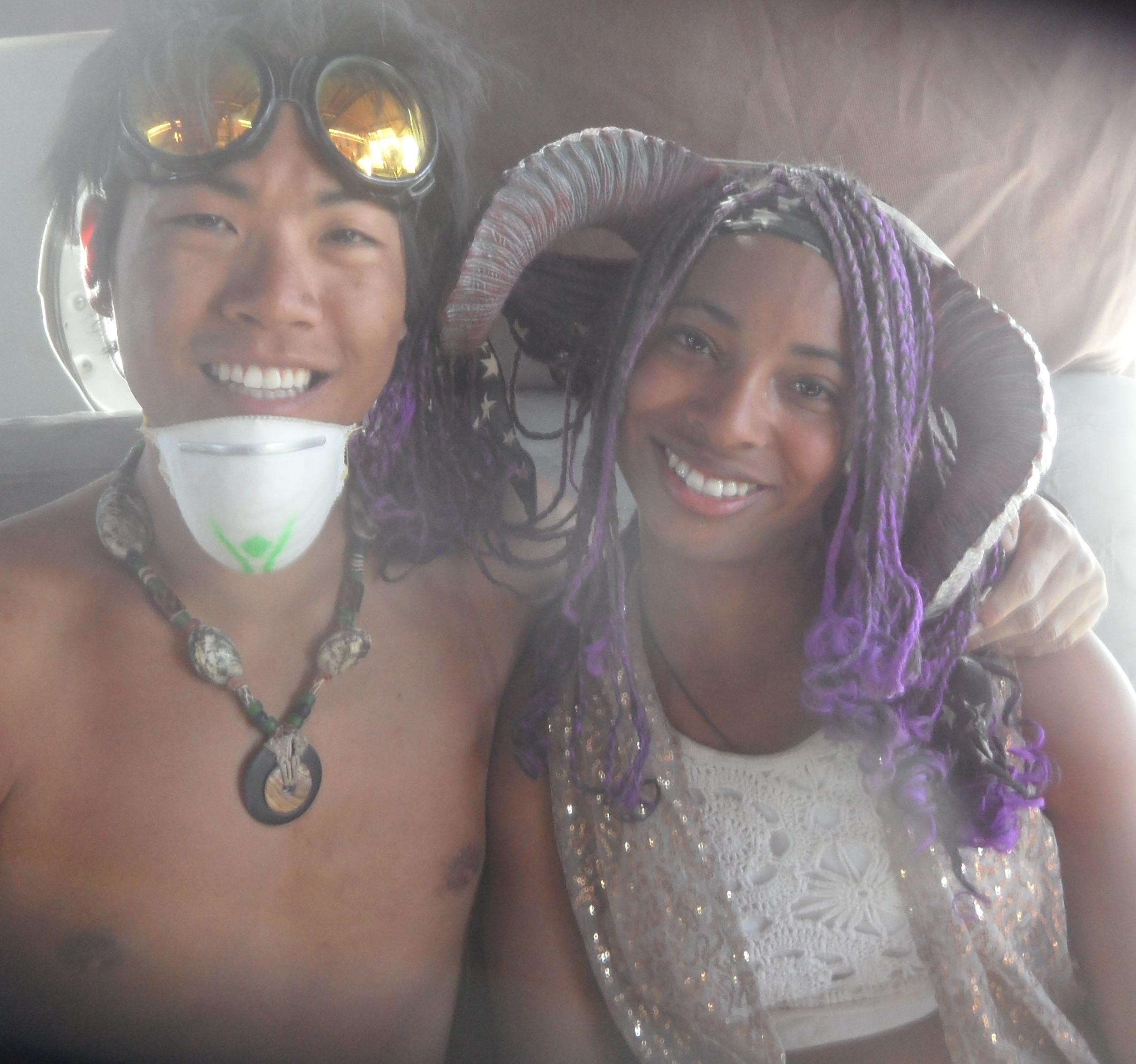
Not all interactions are positive — some respondents had uncomfortable situations they were willing to discuss. It is fruitful to acknowledge the similarities with issues off-playa.
“Have you ever had any bad experiences with others at Burning Man? If yes, please describe one or two incidents.” (33 answered, 10 skipped, two directly related to race, included below.)
- I was at Center Camp and heard white people re-enacting the scene from Pulp Fiction — where the characters say, ‘No dead Nigger storage.’ That enraged me.”
- [Two of us] walked by a camp and a rap jam was on. My friend jumped on their small dance floor. The song was quickly replaced with a white song and we walked away. As soon as she was gone, they put the black music back on again.
So, there’s that. And while these two situations were not “in your face” racism, they were symbolic of the discomfort some African Americans experience on occasion on the playa. Newsflash: Neither the playa nor its inhabitants are perfect. As we say in the world of sports sociology, the problems we see in society will be reflected in sport; the problems we see in sport are a reflection of our society.
In this sense, Burning Man is no different. If society has problems and conflicts over race, sexuality and homophobia, women in positions of power, and money and class conflict, they will likely show up at Burning Man. Here’s the rub…
While Burning Man cannot look away from these random incidents, these incidents do not represent the norm. Radical Inclusion, one of Burning Man’s 10 Principles, means just that — not excluding people because we don’t like them.
Though part of me wishes we could somehow screen out racists, or sexists, or homophobes, we can’t. That actually might be okay though, because those who are “exclusive” in their thought might be the very people we want to expose to positive playa culture. You don’t need to agree with me, simply chew on that for awhile.
I believe contact can possibly shift opinions toward equality. Staying home in our various enclaves leads to more of the same myopic views. Living in a stereotypical world without any evidence to the contrary can reinforce those stereotypes (“my negative views must be true!”)
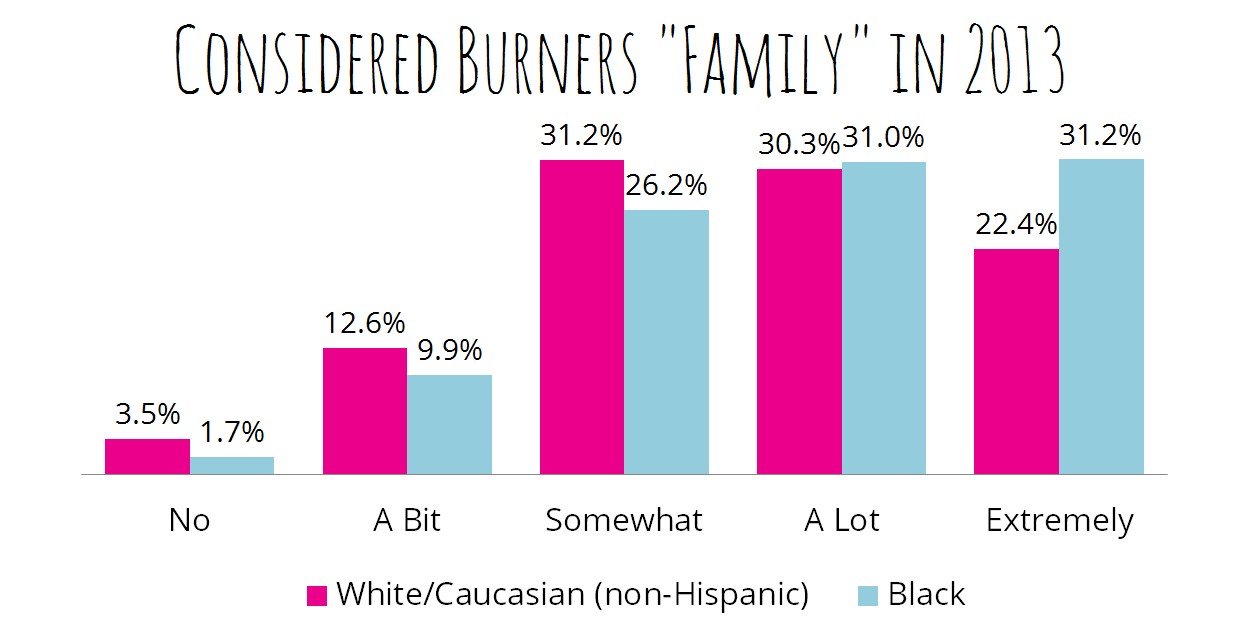
Conclusion
It is a good trick to think of some set of social activities as having just that organic character — looking for all the connections that contribute to the outcome we are interested in, seeing how they affect one another, each creating the conditions for the others to operate. (Becker, 1998)
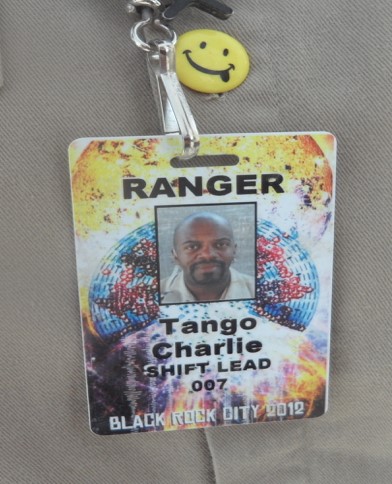
I hope the playa continues to act as a conduit toward change and fulfillment, and equally, I hope the number of Asians, Latinos, Native Americans and African Americans at Burning Man continues to organically grow and the Burn becomes more accessible for the many who want to attend but otherwise might not be willing or able.
The key is communicating to those we’d like to invite the sense of freedom that is, for many of us, unlike anything we’ve experienced elsewhere.
Written by Vernon L. “Uncle Vern” Andrews
Dept. of Kinesiology, San Jose State University
Edited by the Census Team, including Bianca Ruffin, S. Megan “Countess” Heller, David “Scribble” Nelson-Gal, Dominic “Hunter” Beaulieu-Prévost, Rachel McKay, Aaron “Murse” Shev, Dana “DV8” DeVaul, and Andrea “Sonder” Morency
Lead photo: A diverse crowd outside Que Viva! Camp, Andrews in yellow, Nick Powers, far right, 2015 (Photo taken at author’s request by anonymous Burner)
Dedicated to Laura Diamond, who passed away in the fall of 2015. A former member of the Census group, Laura was a powerful champion of diversity at Burning Man and an original member of Que Viva! Camp. Please follow this link to view her spirited performance piece about this topic.
For more on the topic of race on the playa, please see fellow Burner Steven Thrasher’s wonderful piece in the Guardian which chronicles the participation of many 2015 African Americans in Black Rock City: “Burning Man’s black campers explain why they are the 1%”
References
Allport, G. W. (1954). The Nature of Prejudice. Cambridge, MA: Addison-Wesley.
Andrews, V. L. & Brower, A. (2011). “Social Entrepreneurship as Social Activism: Reweaving the Urban Fabric through Sport, Recreation and Leisure.” In Hawkins, B. & Polite, F., Bridging the Gap of Sport, Race, and Social Change: Expounding on the Legacy of Dr. Harry Edwards. Cognella: San Diego.
Andrews, V. L. and R. Majors. 2004. “African American Nonverbal Culture.” In Black Psychology. Reginald Jones, editor. Cobb and Henry: Hampton, Virginia.
Becker, Howard S. (1998). Tricks of the Trade: How to Think about Your Research while You Are Doing It. Chicago: The University of Chicago Press.
Du Bois, W.E.B. 1903. The Souls of Black Folk. Greenwich, Conn.: Fawcett [1961].
Majors, R. G. & J. M. Billson. 1992. Cool pose: The dilemmas of black manhood in America. New York: Lexington Books (MacMillan).
Sage, G.H. & Eitzen, D.S. (2016). Sociology of North American Sport. (Tenth Ed). Oxford.
Taub, Amanda. 2016. “The Rise of American Authoritarianism.” Vox.com (March 1)

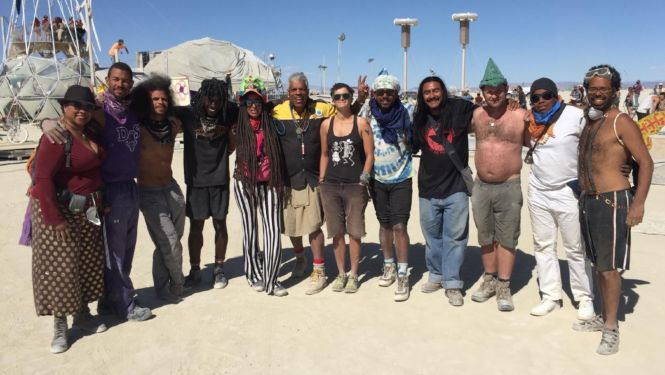
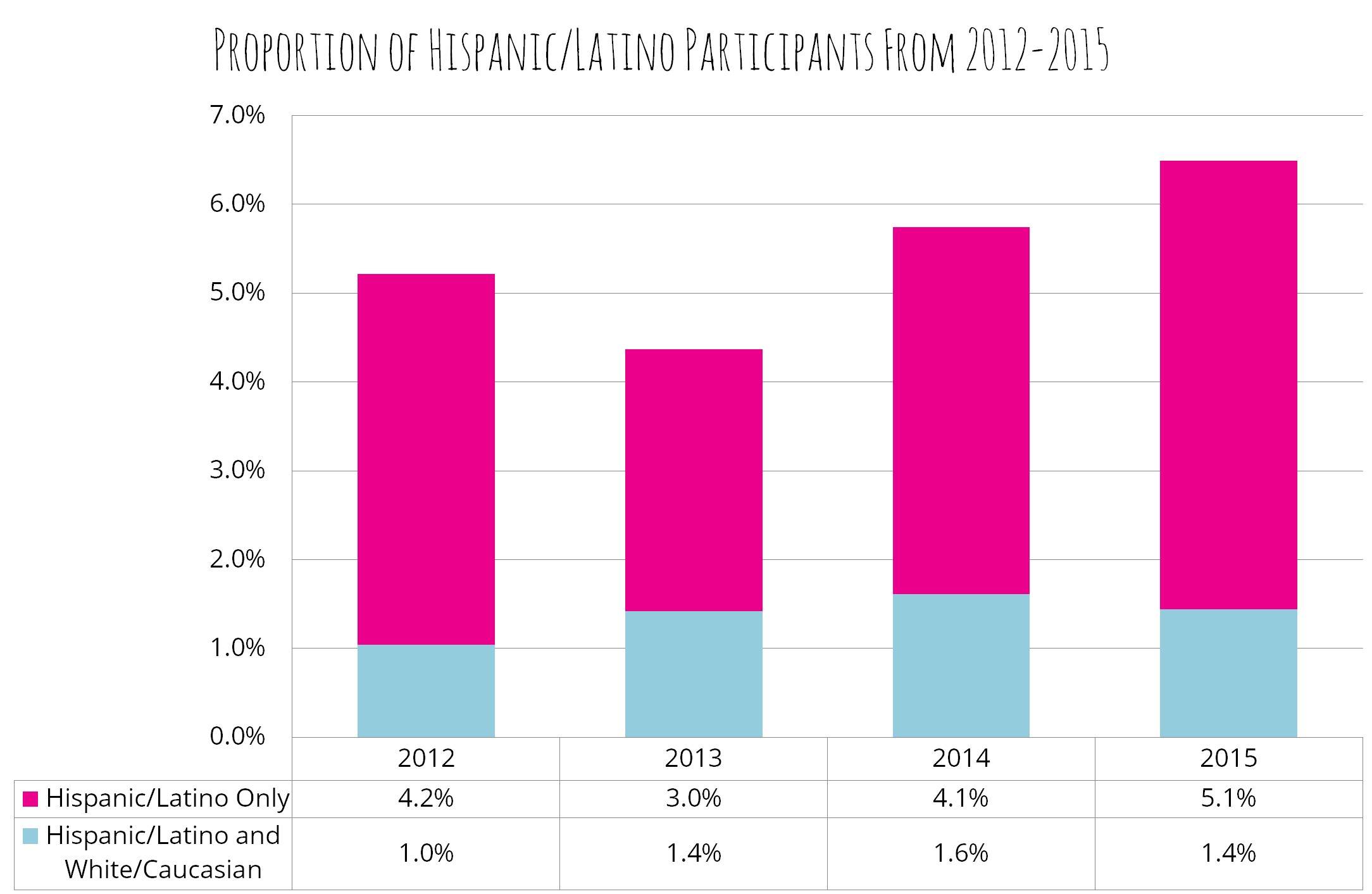
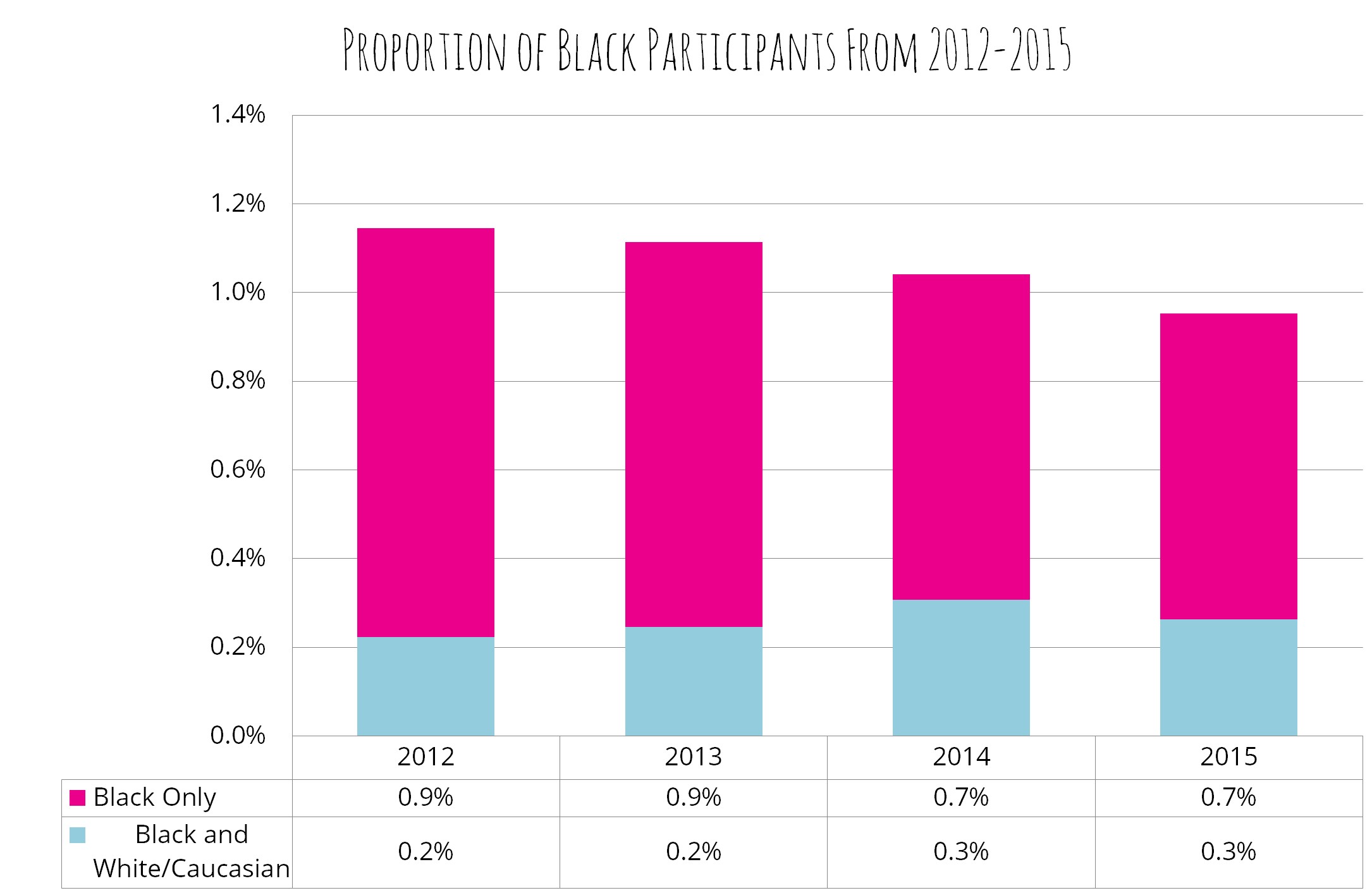
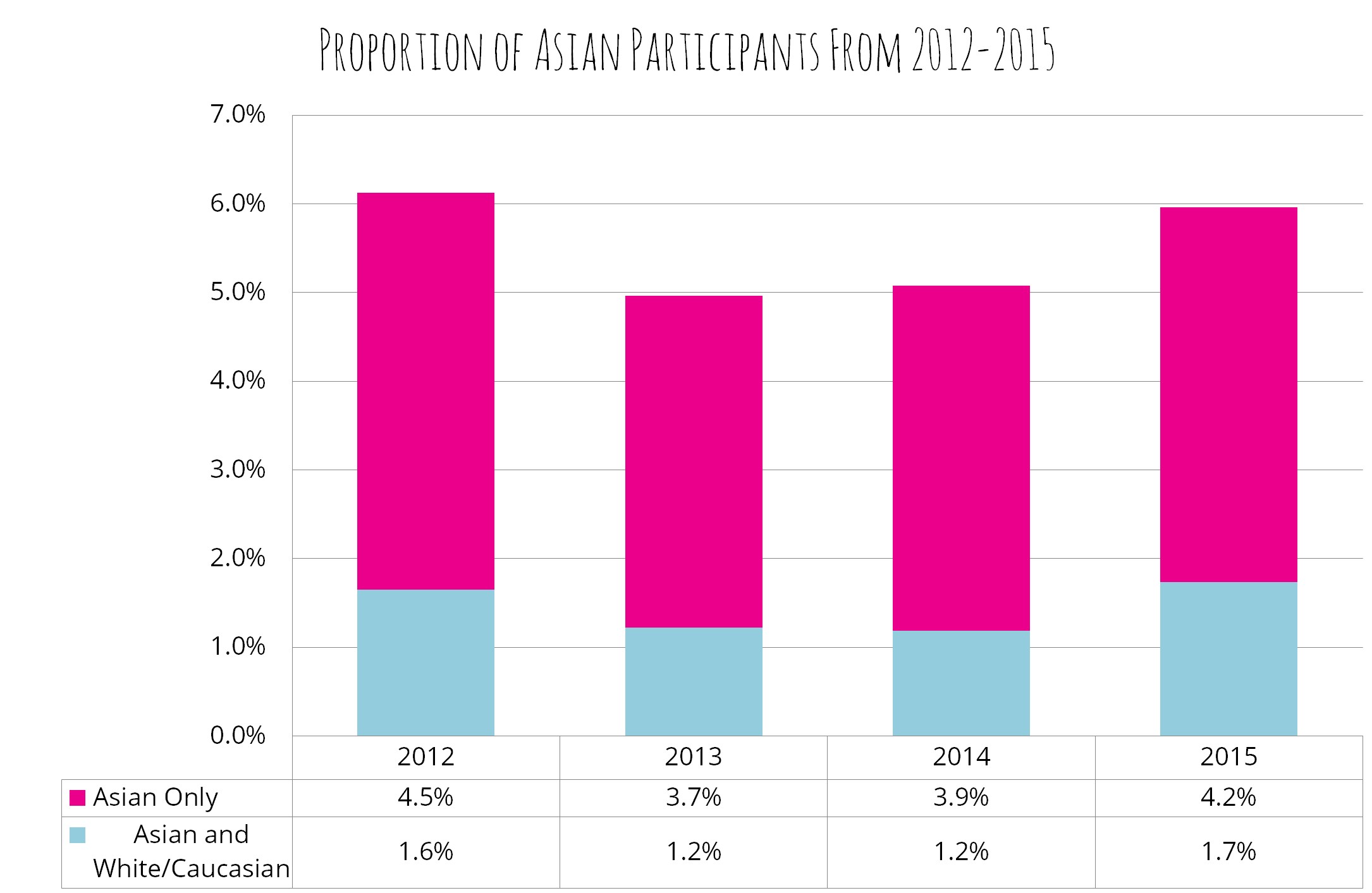
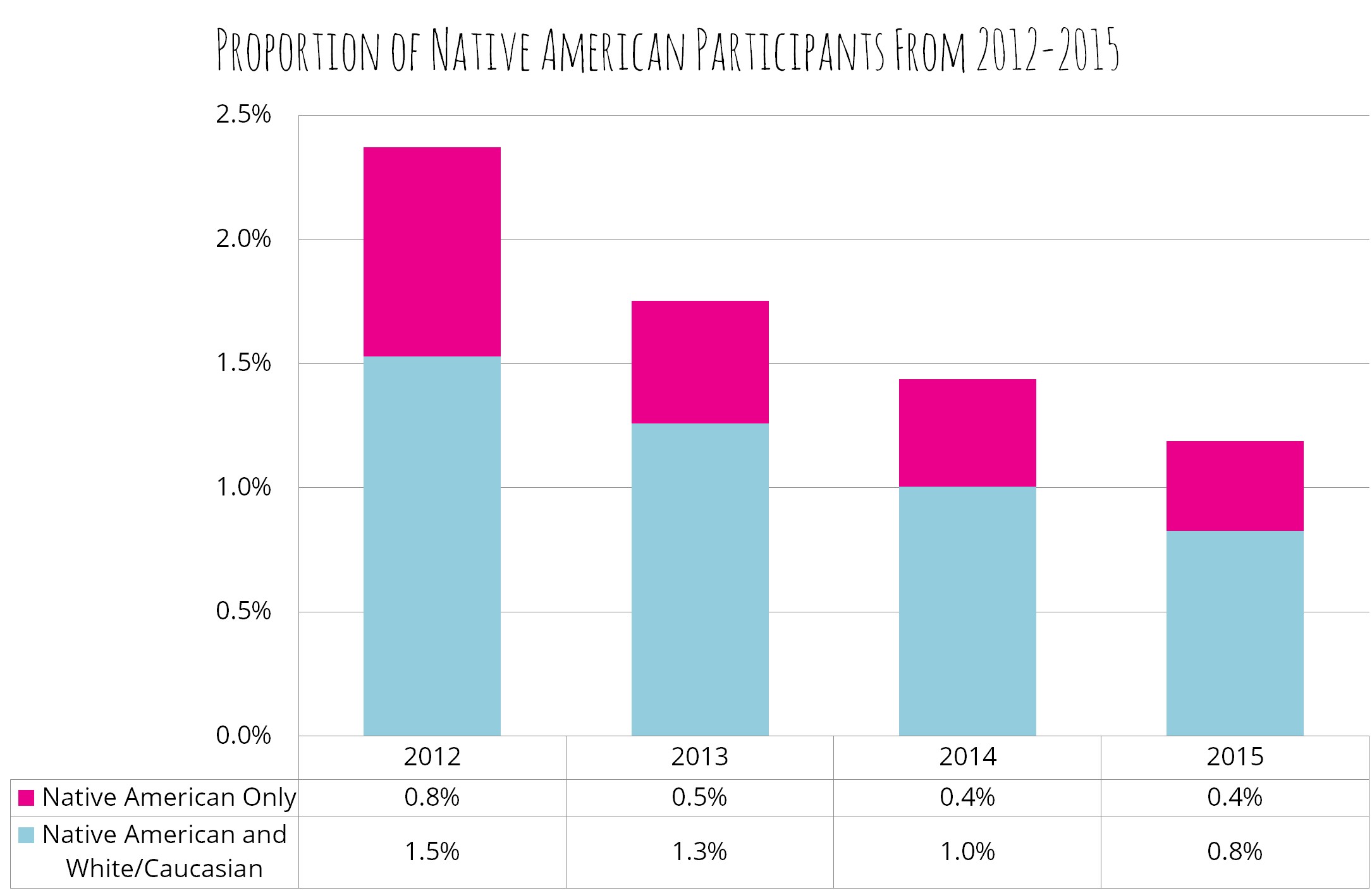
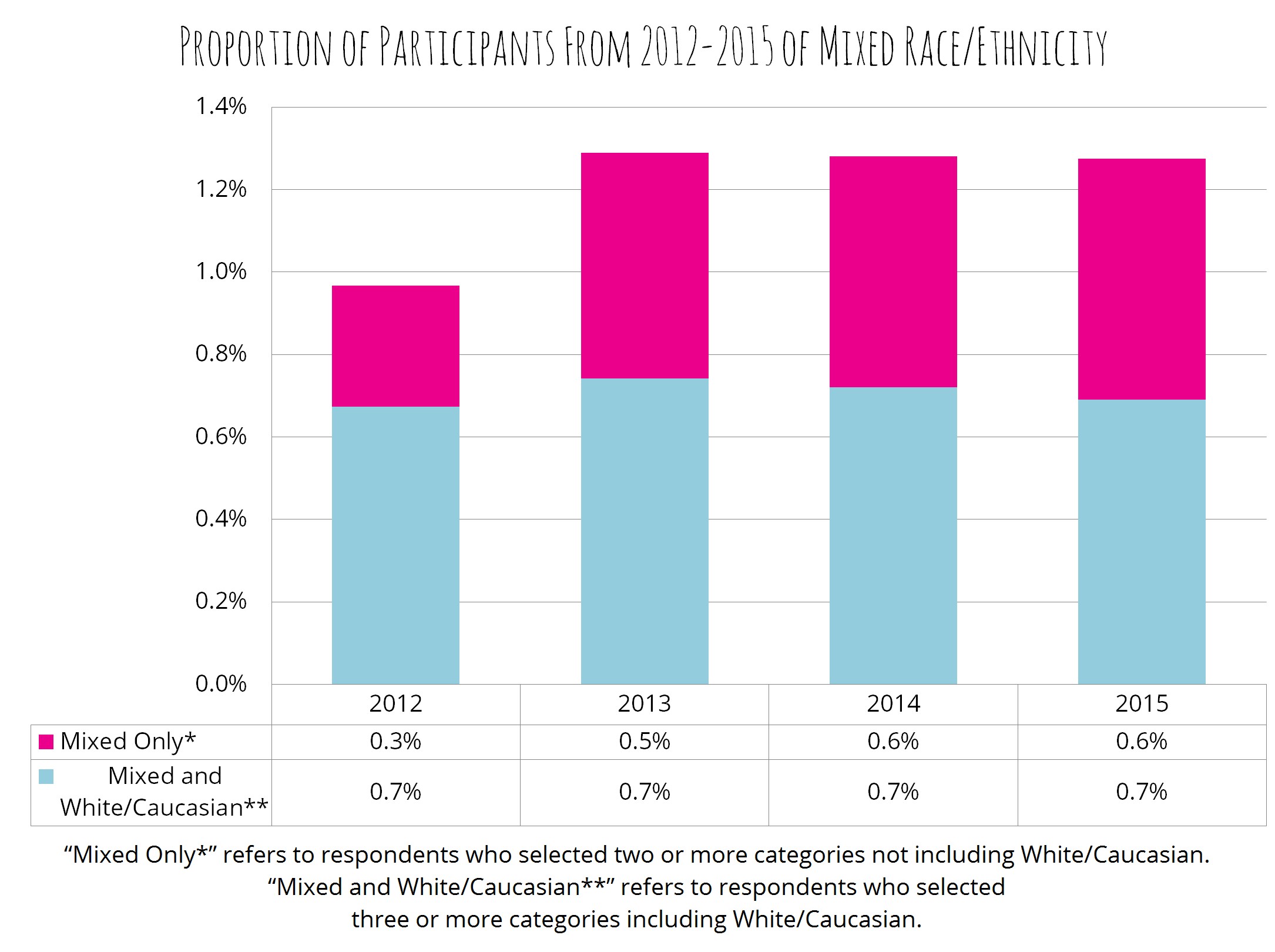
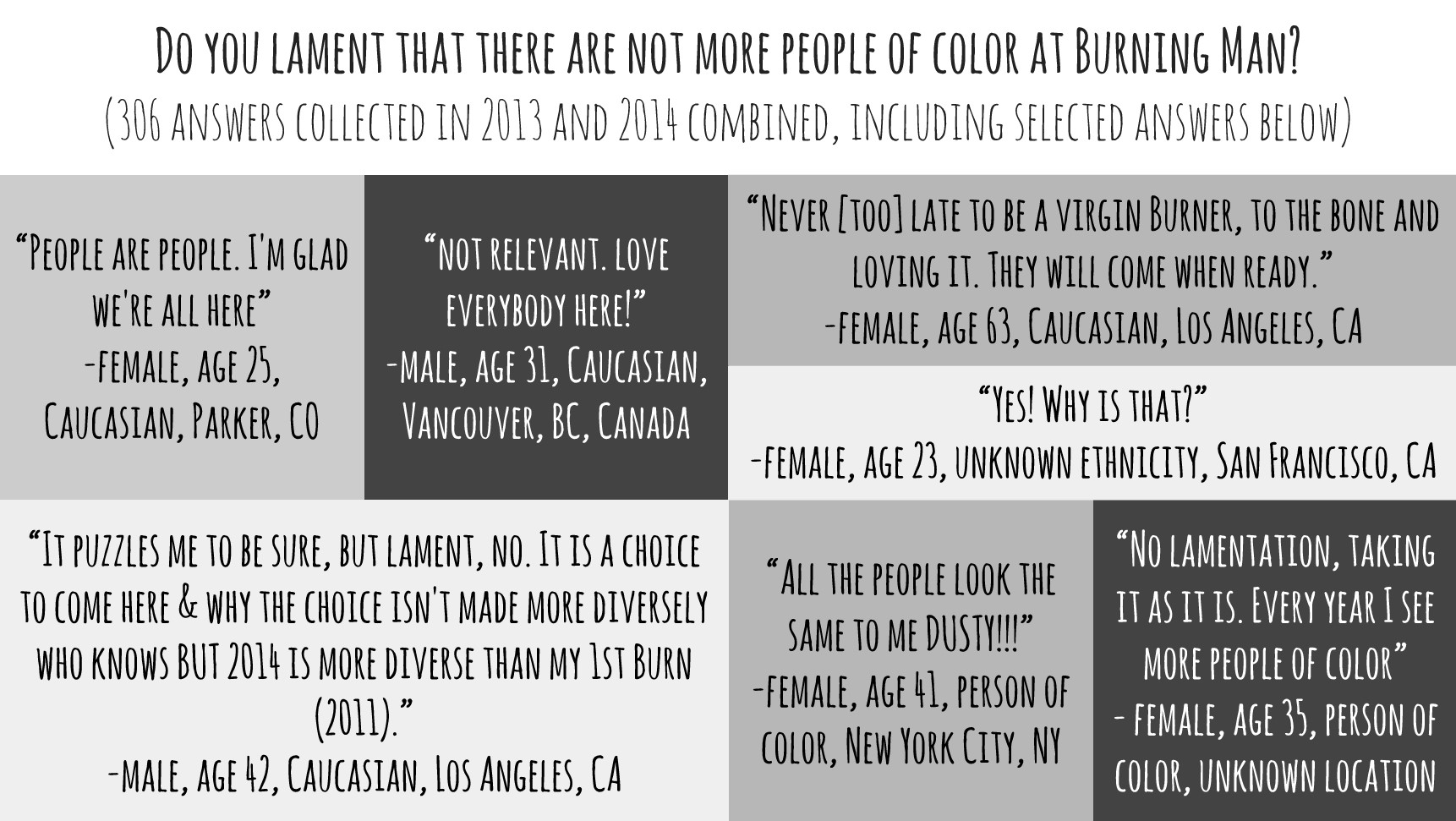
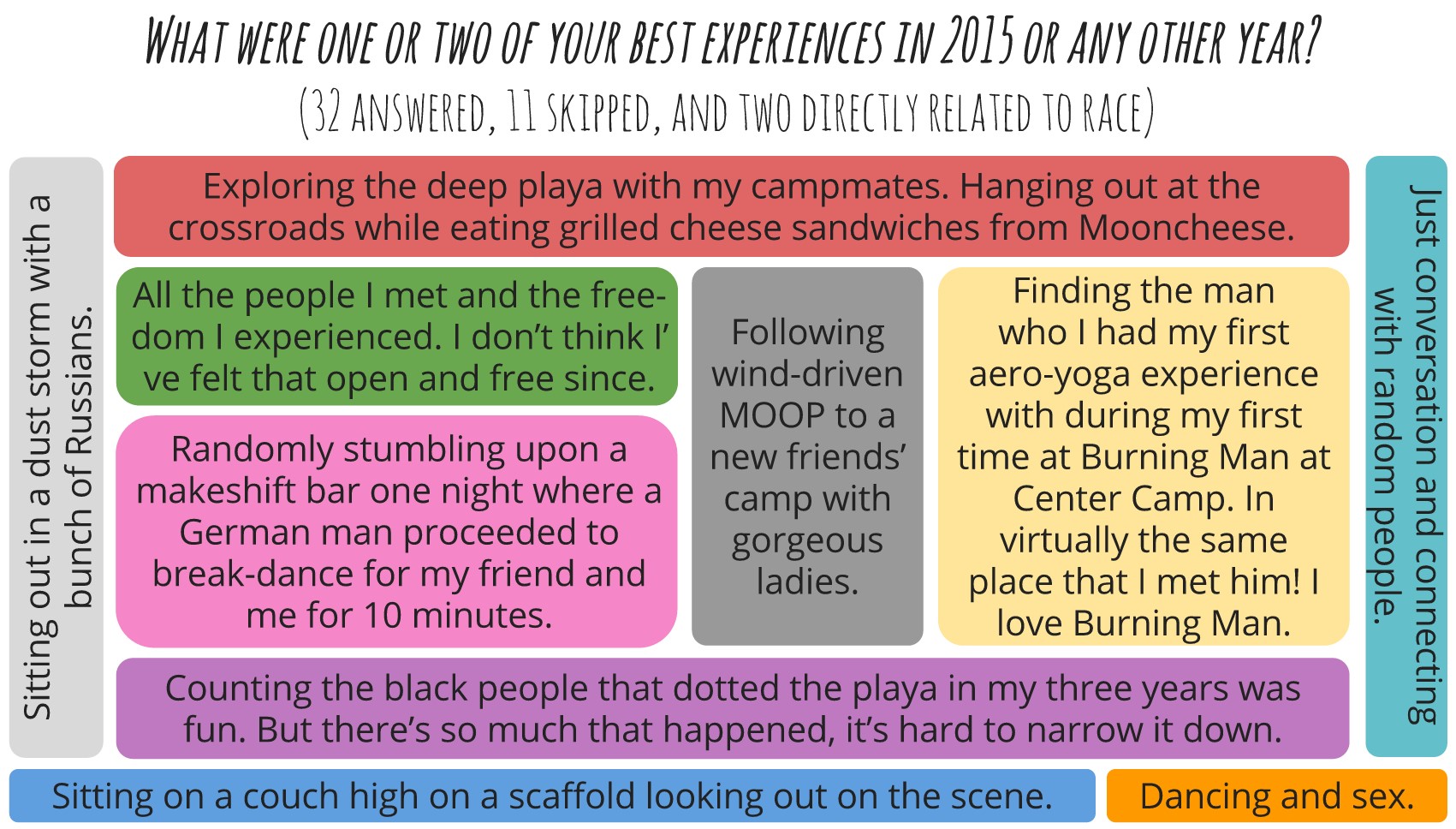
Ridiculously awesome post, Uncle Vern. I was hoping to see a blog from you ever since I heard you speak at the East Bay Burners event! Thanks for the perspective and the data (mmm, data).
Report comment
Yo Brody! Thanks much. The team worked hard on this piece. Looking forward to buying you a beer on the Playa this year. Stop by Que Viva! Two-fer-One Tuesdays! (BRC humor.)
Report comment
all i learned was that people want to be butthurt and have something to complain about…even the idea of a census is totally rediculous, and these loaded questions, i mean fuck, stop analyzing us like its somehow your responsibility or there is something to fix here…its this rhetoric and social bureaucracy we are trying to escape. be here now or dont, please just dont get us involved.
sincerely, the silent majority.
Report comment
Hi memer,
BRC Census is an entirely volunteer-run effort comprised of curious Burners who choose to spend some of their time on- and off-playa learning about the residents of Black Rock City. We are only able to collect data because so many of our fellow Burners share our curiosity and are willing to answer the questions we ask. This post is a synthesis of several different data collection efforts, all fueled by knowledgeable volunteers who want to learn more about their areas of interest. We invite our volunteers with relevant experience and expertise to help us to decide on areas of inquiry and methodology for our studies. Anyone with concerns or questions about the how’s and why’s of BRC Census can reach out to us anytime to obtain more information, or to join our team and provide a new perspective.
Report comment
dont get me wrong. This is more of a ‘What the fuck is this’ statement than anything else. ive only been burning for 11 years, but i fear that all these self-righteous politics are the reason for the influx of non-participant spectators and the degradation of the event as a whole. I only take issue that the miniscule numbers of people that can be bothered to answer leading questions will find or fabricate a cross to bare. in my opinion those so over eager are the wrong subjects anyway, I mean did you even offer them a cookie? but to have their empirical data extrapolated to mean anything is beyond me… so what is the proposed involvement of the LLC. sounds like our great unelected body is trying to keep themselves busy buying everyone an emotional support turtle. and whats next, negotiating with groups who send letters in complaining although they (and everyone plus their mother) were invited, they wont attend unless their demands are met? were calling off the dust storms cause gary is hypoallergenic? This is just stretching way too far into “what is burning man doing for me?” territory here. but hey i disagree with even the events book, the adventure is robbed.The dubstep was a mistake…so im not everyone ;)
its just that the magic is in the chaos
Report comment
Hey Memer, Not only is that what Census people do (along with most of the civilized world), but such study can and does lead to better understanding of all of us. Some years ago, I participated in an extensive study by a Census person working on her PhD, and found the entire experience quite interesting and telling of the sincere and loving nature of the Census folks. I liked every one of them I met. I think you need to cut ’em some slack. Who else are the Census peeps supposed to study if not people. You are one of those, right?
Report comment
Hello,
How many people answered to the census? I can’t find the information.
Dusty Thanks,
Amélie
Report comment
A little more than 1 in 7 BRC residents filled out our online survey this year (around 9,600 responses total). Those survey results were adjusted based on the results of our random sample, giving us a pretty comprehensive picture of the population of BRC. Our first Journal post (http://journal.burningman.org/2016/02/black-rock-city/participate-in-brc/burners-meet-black-rock-city-census/) talks a little more about our methodology if you’re curious about how the two datasets are used together to generate our final results.
Report comment
Here’s the AfterBurn Report, shared shortly after Burning Man 2015: http://z9hbb3mwou383x1930ve0ugl.wpengine.netdna-cdn.com/wp-content/uploads/BRC-Census-2015.pdf
Here’s the 2015 Black Rock City Census
Annual Report: http://z9hbb3mwou383x1930ve0ugl.wpengine.netdna-cdn.com/wp-content/uploads/2015-Expanded-Census-Report.pdf
All of which can be accessed through http://journal.burningman.org/census/ or http://burningman.org/culture/history/brc-history/census-data/
Report comment
Approximately 9600 completed forms.
Report comment
The CENSUS is now done o lien after the Burn.
Please take the time to submit your CENSUS Emily.
WE make all info public and people, Academics, students,
anyone can use our findings for their own writing/sharing
projects!!!
Report comment
The sample size is too small to be of much significance in anything other than as an anecdotal compliation. That said, the commentary on the data is more revealing than the data itself. The comments reveal a Burner desire to understand society’s racial gap as it is reflected in our community and explore ways to bridge the gap at BRC. As a 46 year veteran of fighting for de-segration and integration I applaud this effort. In fact, my Burners portrait project at Center Camp for the past seven years has had revealing the diversity of Burners as one of its two primary goals–the other being to publish a book of portraits and and contributing the profits to the construction costs of future Temples.
Report comment
PS: You can check out the book by going to http://www.burnerportraits.com.
Report comment
Remind of how many people of color Burning Man employs or staffs?
Report comment
A magnum opus! Great work, Uncle Vern! Great data, great interpretation, great narrative, and great pictures! I, for one, do lament that there aren’t more people of color at Burning Man because everybody I know who has been loves it, and I want all people to have access and to feel welcomed at such a beautiful event.
Report comment
Comments are closed.